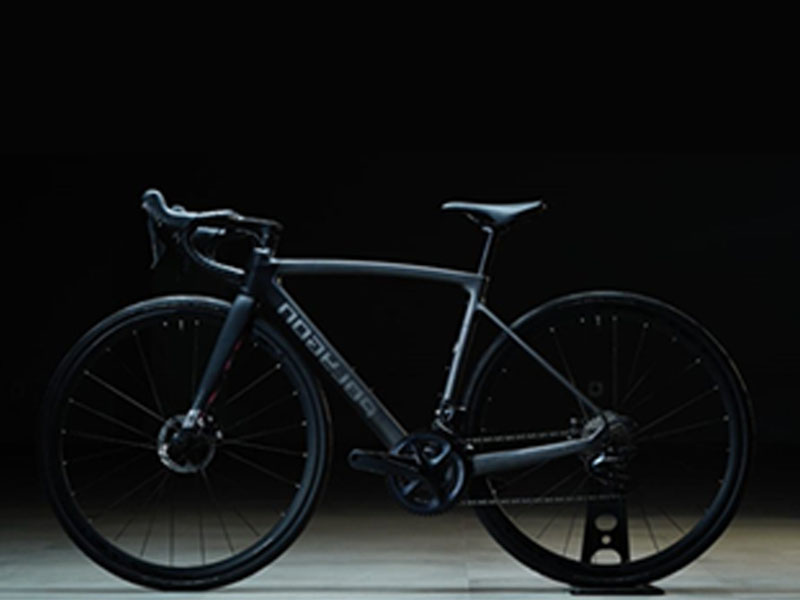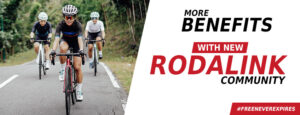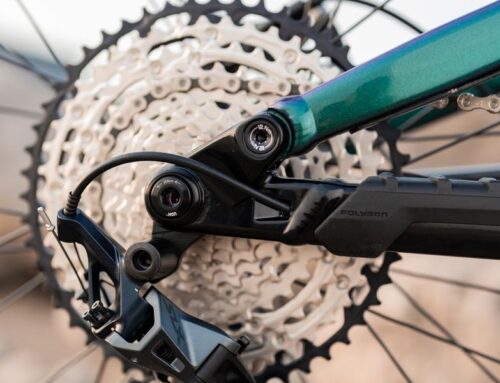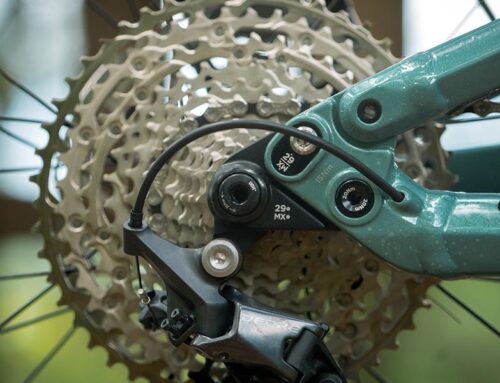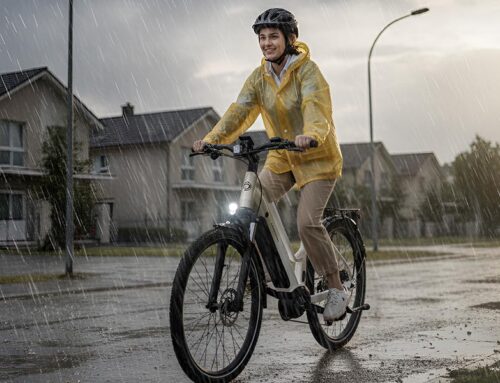Getting to know your bike is more than just knowing what type it is, what features it has. If you are meaning to make several upgrades to your existing bike, or just a dedicated customer, then you need to know the anatomy of your bike. This guide might be for those of you road bike enthusiasts. But, we are still keeping it simple and light for beginners to understand as well!
What Is A Road Bike?
Before we dive in deeper, let’s swim in the shallow parts first to learn it from the basics. A road bike is a bike specifically designed for riding on smooth terrains such as pavement, with features that increase aerodynamics and built for speed. There are further 3 types of road bike :
- Performance (race) road bike : a bike that is good for fast-riding, for when you are looking to cut through the wind and get to the head of the race.
- All-rounder road bike : a bike that is both good for racing and climbing, lightweight and supports aerodynamics with more seating position support for its cyclist to remain comfortable when pedaling on steeper terrains.
- Gravel road bike : a bike that is suitable for both riding on smooth surfaces or even a slight off-roading. While the previous two work best on pavements, you can get away with riding through dirt and gravel with this type of bike.
If you want to learn more in depth about road bike introduction, click here for our previous article that is also super beginner friendly!
Road Bike Anatomy
Browsing through the bike parts and accessories can be overwhelming. You are greeted with the most weird and tech-like names that you have not even heard before, let alone know what it means. But not to worry, we will help you gain more insight about what those are! Since you have learned what a road bike is, let’s talk about its specific anatomy parts that makes this type of bike best for speed. It is important for you to know what each parts term is and what it does, especially when you are looking to make upgrades for your bike.
Road bike anatomy can be broken down into :
- Road bike frame : consists of top tube, head tube, down tube, seat tube, seat stays, and chain stays
- The front of the road bike: consists of the fork, headset, stem, and handlebar
- Road bike wheel : consists of the hub, rim, spokes, tire, and valve
- Road bike groupset : consists of crankset/chainset, bottom bracket, chain, front derailleur, cassette, rear derailleur, brake levers, and brake.
- Other road bike parts such as the pedals, saddle, and seat post
Road Bike Anatomy–Explained
Now that you have familiarized yourselves with the term, we are going to explain to you what each part is and what it contributes to the road bike so that it can achieve its desired performance.
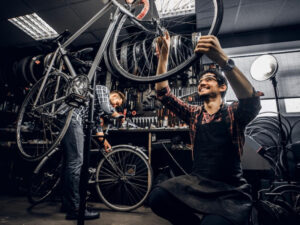
Frame Set and Fork
A road bike frame set and fork is basically like the bone structure of our body. It is the main part that holds the road bike to stay in its shape, where the lightweight characteristics mostly lie, also strong and rigid.
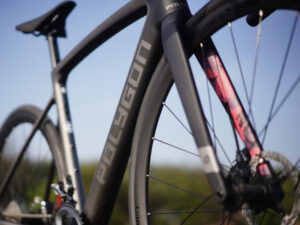
There are 3 types of frame set :
- Diamond Frame: consists of a head tube, top tube, down tube, and seat tube that is connected to a pair of seat stays and chain stays
- Step-through Frame: consists of a top tube that connects the middle of the seat tube instead of the top and resulting in a lower standover height
- Folding Frame: comes with a hinge that makes it foldable into a more compact form. This particular hinge on the folding bike frame is one of the parts that differ the folding bike anatomy from other types of bikes.
A road bike itself will usually come with a diamond frame type, with each of the parts will be :
Head Tube
A head tube is a short tube connected to the handlebars, wheel fork, top tube, and down tube. This part has a headset as the steering wheel, known as the handlebars.
Top Tube
A top tube of a road bike connects its head tube and its seat tube. It is where cyclists will stand over the bike. Usually the top tube will be parallel to the ground but might be slightly angled.
Down Tube
Down tube is a long tube that runs from the head tube to the lower end of the seat tube, and is also connected to the bottom bracket. It is usually the thickest part of a road bike frame. Typically, most brands will also print their logo here. It is also used to hold the water bottle cage.
Seat Tube
The seat tube runs from the saddle to the bottom bracket. It is also the part that connects the top tube with the down tube, seat stays, and chain stays. If cyclists want to adjust their saddle height, they will heighten or lower the depth of the seat post into the seat tube.
Seat Stays
Seat stays are the two thinner tubes (one on each side) that runs from the saddle to the rear wheel hub, where each seat stays will stick to a drop-out that is connected to one side of the axle on the rear wheel.
Chain Stays
Chain stays are another thinner tubes that run parallel to the ground from both sides of the rear wheel and along the bike chain.
Fork
A road bike fork is a that connects the front wheel to the frame and handlebars. The fork runs from the head tube to each side of the front wheel. The fork size will usually also be in the description of a bike to give an explanation of how the handlebars will sit compared to the seating post.
Handle Part
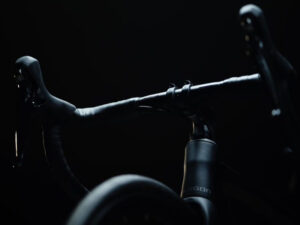
It is where the steering wheel of the bike is situated, which is composed of :
Headset
A headset is a set of components inside the head tube, connecting the frame to the wheel fork and handlebars. It is the part that allows the head tube to rotate causing a turn of the handlebars which then creates the turn of the front wheel.
Stem
The part that connects a steerer tube which is located inside of the fork, to the handlebars. You can usually see it as it sticks out from the top of a head tube and directly holds the handlebars.
Handlebars
The steering wheel of your road bike. Usually it will be a drop handlebars type, causing the handlebars to sit lower than the seat post, so that the cyclist’s body position can drop lower and flatter to increase aerodynamics and reduce drag.
Bike Wheel
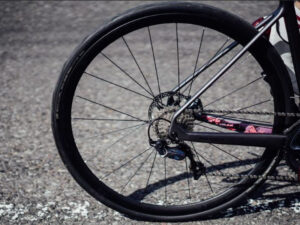
It is what makes your bike roll smoothly, which are made of :
Hub
The center point of the bike wheel is made of three parts: the hub shell, the bearings, and the axle. The hub shell is the outer part that allows the spokes to attach. Bearings sit in between the axle and the shell allowing the wheel to spin.
Rim
The rim of your bike is where the tire will sit and attach to. A good rim will have a smooth surface on the side for the brake pads to grip on and serve its braking system properly.
Spokes
The part that connects the rim to the hub of the bike.
Tire
Attached to the wheel rim, it is a part that connects the bike to the ground. There are three types of bike tires: tubeless tires, clincher tires, and tubular tires.
Valve
A valve is the screw-like shape that points out of your tire to control the airflow in and out of your tire’s inner tube. There are two most used types of valve : Schrader and Presta. You should pay attention to the Presta valve as it is exclusively used in a bicycle, while the Schrader valve is also used for cars and motorbikes.
Groupset
A groupset of a bike is the house power, the mechanism that transforms the effort you put in pedaling into tire movements.
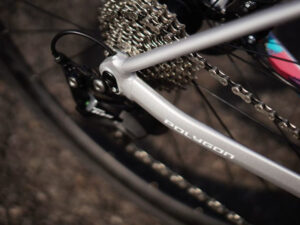
Crankset or Chainset
The crankset is attached to the frame by the bottom bracket to the rear wheel, and also attaches the chain to the riders by pedals.
Bottom Bracket
The lower part of the bike where the down tube, seat tube, and chain stays will connect to. Consists of a spindle and bearings. It is the part where the crank arms rotate around.
Brake Levers and Shifter
The part of the bike that allows riders to slow down the bike or even put a full stop. There is also a shifter, known as gear control / gear lever, the component of a bike that is used to switch between gear ratio. This part controls a derailleur mechanism or an internal hub mechanism by moving a cable that connects the shifter to the gear mechanism.
Brake
Nowadays, bikes will usually come with disc brakes instead of the rim brakes that have been around for a long time. This kind of brake will work directly on the bike’s axle instead of the wheel’s rim. The calipers will squeeze the pair of pads it has against a disc to create friction, hence slowing down the speed of your bike.
Chain
The part that transfers the power from the rider’s pedaling to the rear wheel. It loops around the chainring in the crankset along the length of the chain stays and around the sprockets of the cassette on the rear wheel.
Front Derailleur
This particular part is only present on bikes with more than one front gear. It helps the riders to move the chain from one chainring to another as riders shift the gears using the shifter.
Cassette
Stacks of different sized sprockets that are attached to the hub of the rear wheel. This is what makes the bike have several gear options. There will be more than one sprocket to make a sprocket set, which will indicate how many gear options the bike has. For example, 10 sprockets for a 10-speed cassette, 11 sprockets for 11-speed, and 12 sprockets to make 12-speed.
Rear Derailleur
Like we have learned before, the derailleur is only present when the bike has several gear options. The rear derailleur moves the chain from one cassette sprocket to another on the rear wheel when riders shift the gear.
Other Road Bike Parts
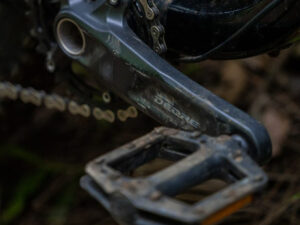
Other than the anatomy of the main body itself, road bikes also consist of parts you can not be left behind. These are pedals, saddles, and seat posts.
There are also 3 different kinds of pedals, which are clipless, flat, and three-bolt clipless pedals. The saddle is also offered in different types of materials. You can also change the seat posts to adjust the saddle and have a better position while cycling.
Conclusion
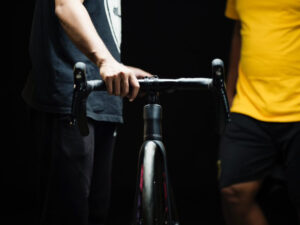
Polygon Road Bikes are known for its credibility. Made from high quality materials that serve its purposes. Most Polygon Road Bikes will be made of carbon fiber material. But the all-rounder will be made of a mix of carbon fiber and alloy. The groupset used is the premium quality Shimano, with disc brakes as well.
Ready to shop? Head on Rodalink Malaysia for online shopping without hassle! We offer a wide range of bikes you can choose from, as well as the parts and accessories. You can select the payment method that suits you best and enjoy free local delivery.
Join our Rodalink Community now! By becoming a member, you can earn exclusive promos and access to events as well. You can start collecting your points right from your very first purchase.
Best part is, we are also having a bike parts and accessories sale live on our website now. There is no better time to upgrade your road bikes than now. Let’s get shopping!
